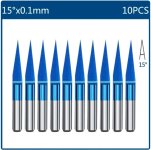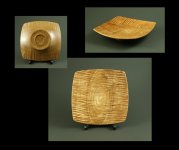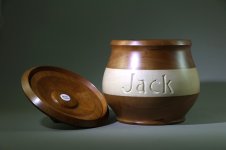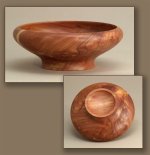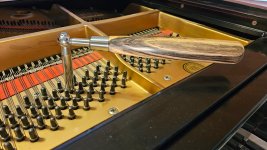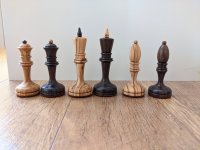While it was interesting to read kiwisqueezer's musings, I've actually tried this idea a while ago and it works like a dream.
So hard & sharp that you never need to put any pressure on the reeds. Extra hard bayan or bandoneon reeds? Scrapes like butter. Sharpening? Forget about it, you might do it once a year, but so far mine hasn't gone blunt. Because it doesn't lose the edge, it tends to be quite consistent with the amount of steel it takes off. Because you're not using any significant pressure to scrape, you don't chip the cutter. Simples.
You'll never want to touch steel again. I mean who wants to cut steel with steel

? Are you also planning on cutting cheese with a cheese knife? A knife made from something hard, like parmesan might be OK to cut brie, right?
Circular shape is probably the best, but I suspect that a TCT rod will be harder to source & sharpen and will cost a small fortune. When I was looking to experiment, a rod was working out as ~£30, while a dozen of engraving tips were £3 taxed & delivered from China.
1) You want it thin to be able to fit it in the plate slots, so get some dirt cheap 15 degree TCT engraver bits with a 3.175 shank. For example:
Huhao engraving bits
* I've used Huhao-branded TCT router bits and forstner drill bits for over a decade. Excellent stuff. Never let me down.
2) As you can see, the cutting ends are pointed & the tips are too thin for scratching and break too easily, so you want to break off the top 1-2mm, depending on how wide you want your scraper to end up. After that, bump the broken tip on a diamond honing plate to put a square edge on it. Took me 5 minutes on cheapo off-brand diamond sharpening plate.
3) Fashion some sort of a handle for it. Long & thin is best. If you're really low on funds after buying £3 worth of tips, you can take a 6mm wooden dowel, drilled out for the 3mm shank & sharpened like a drawing pencil to stop the wood from getting in your way. Insert the tct tip, wrap some string around it, caveman-axe-style and drown it in CA glue.
4) The most keen eyed of you will notice that the cutting tip is not a round rod. That's a bit of an issue, but the way round it (ha! did you notice the pun?!) is to cut a flat on the wooden handle and align it with the flat on the tct tip. It is, in fact, an old leatherworking trick, where you want to hold a diamond-shaped awl at a constant angle to your workpiece: impossible to do it by eye if it's in a round handle, but very easy to do it if you file a flat on the handle and let your fingers register against it. You very quickly get used to presenting the scraper with its flat face to the reed, using the flat as a reference. You can even use it "upside-down" and scrape with the very pointy bit for fine-tuning piccolos.
 ? They have replaceable tips and are very similar to the typical metal scratchers
? They have replaceable tips and are very similar to the typical metal scratchers 


